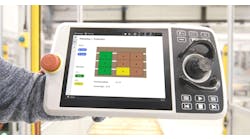Long-Term Expansion for U.S. Manufacturing — and How to Achieve It
Surpassing all expectations, the Federal Reserve reported recently a rise in the U.S. manufacturing production index of 0.5% for August 2019. This development means it’s possible to reconsider our understanding of the American manufacturing industry, in comparison with Asian competitors.
In 2018 the Brooking Institute reported that 20% of global manufacturing output came from China, with the U.S. coming in a close second with 18%. This classification has remained entrenched in the world economy since China’s initial stretch to number one in 2010. There is no clearer evidence of this than the United States’ trade deficit versus China, which according to the U.S. Census Bureau grew from $273 billion at the start of this decade to $419 billion in 2018.
“The problem is that the United States has steadily increased its consumption of imported consumer apparel, electronics, and industrial components, with no corresponding increase in advanced manufacturing goods,” according to Andrew Stettner, Joel Yudiken and Michael McCormack, contributors at the Century Foundation.
“While U.S. consumers have benefited from low-priced imported goods, those goods have been available at the cost of increasing debt with other nations (especially China) that eventually will have to be paid back through increased ownership of U.S. assets by foreign nations or higher prices (inflation).”
However, the same opportunities that have allowed Asian manufacturing industries to expand so impressively could prove advantageous for the U.S. According to a Century Foundation report, shipping costs have been decreasing steadily since 2008.
Meanwhile, employment in the U.S. machinery industries increased by 10% between 2010 and 2016. Based on these figures, it seems the United States is in an ideal position to step up its manufacturing capabilities.
More robots, increased productivity — The U.S. still has an advantage in robot density in the manufacturing industry, compared with China, but it pales in comparison to other Asian competitors. According to the International Federation of Robotics (IFR), Singapore and Korea have more than three times the number of robots installed per 10,000 employees than does the U.S.
China also is installing new machinery at a faster rate than the U.S., which means it could edge closer in this me
The surge in manufacturing output is an opportunity to compete with the technical capabilities of the Asian market. Furthermore, this will be a necessity if American manufacturers want to remain at the forefront of automation and Industry 4.0.
While the Unites States is still investing more than China in Internet of Things (IoT) technologies, IDC statistics suggest that China, Japan, and Korea collectively exceed America’s yearly spending by more than $79 billion.
To remain in a competitive position, American manufacturers will need to increase their production. Increasing robot density, while also investing in carefully planned automotive updates to existing supply chains, is a necessary step to strengthen the machine building industry. They also will want to look for other ways to improve that competitive advantage — such as committing to minimizing unplanned downtime, and using good obsolescence management for the equipment they do not plan to update. A reliable supplier, like EU Automation, can simplify the process expanding and improving robotics capabilities.
The U.S. trade deficit versus China could hinder government spending, meaning growth in manufacturing could translate to a wider economic growth for the country. The 0.5% index growth was surprising, but with it comes the promise of a much more aspiring future.
Mark Howard is the U.S. country manager for EU Automation, an automation parts supplier. Contact him at [email protected].






